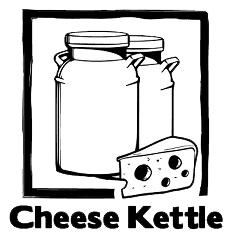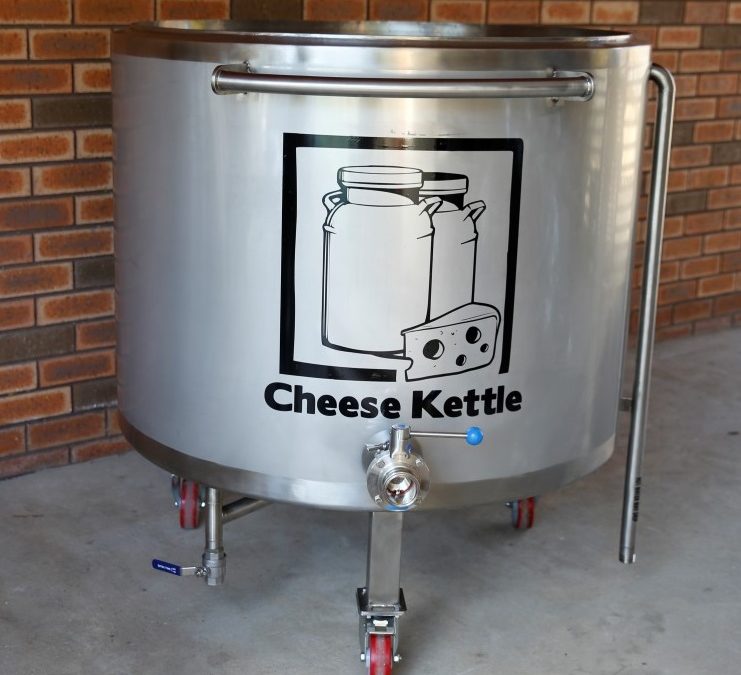If you want to venture into cheese making, there are three components you need to think about: the ingredients, the equipment and the process. Most types of cheese are made with milk, rennet, salt and cultures. Some people feel that having the ingredients, knowing the basic steps in cheese making and some cooking materials at home is enough to start them off in artisan cheese making; but using the proper cheese making equipment can actually contribute to the success of your cheese production.
What equipment do you need in cheese making?
1. Pots
If you are only making a small portion of cheese for personal and family consumption, a large non-reactive, stainless steel pot will do. A pot with a lid is helpful in maintaining the heat during the standardization of your milk.
If you are producing larger quantities of cheese for business, you would need a pasteurizer to standardize your milk and a cheese vat to mould and cut the curds in.
At Cheese Kettle, we offer various kinds of cheese vats and pasteurizers to help you with your cheese production needs.
2. Dairy thermometer
Maintaining the correct temperature is very important in cheese making so you can have consistent results. A dairy thermometer that you can clip at the side of your pot can help you do this. Some good quality dairy thermometers are also already pre calibrated to give you the correct temperature right off the bat.
3. Measuring cups and spoons
A measuring cup and a set of measuring spoons are necessary so you can precisely measure ingredients. Glass and stainless steel measuring cups are best to use since they are easy to sanitize and don’t often get scratches compared to plastic. Stainless steel measuring spoons are also best to use in cheese making, but household pairs should also work just fine.
4. Curd ladle
You use a perforated curd ladle to stir and transfer curds.
5. Curd knife/ Curd cutter
A blunt tipped curd knife will help you cut uniform curds without scratching your pots. You can also use a curd cutter so you can make perfect cuts very quickly.
6. Cheesecloth and Colander
To drain the whey out completely, you need to line your colander with cheesecloth. Choose a colander that would hold a large volume of curd. If you are producing more curd than any colander could handle, you can use a cheese curd drainage strip.
7. Cheese press
To consolidate the curds when they are already in the mold, you need to apply weight on it. You’d need a cheese press to ensure that the curds get sufficient pressure and is compressed properly.
8. Drip tray
A drip tray is placed under a mold. When you are pressing the cheese, it directs the whey to the pan or the kitchen sink.
9. Cheese draining mats
You use cheese draining mats to air dry and age your cheese. It is advisable to use a fine mesh ripening mat because it leaves texture on the surface of the cheese and is less likely to pull mold when the cheese is flipped.
10. Waxing pot and brush, and Cheese wax
If you are making hard cheese, you need to wax it to protect it from airborne bacteria. To do this, you would need some cheese wax, a pot where you can melt it, and a brush specifically used for waxing cheese.
12. pH and acid testing equipment
Monitoring the pH and acidity level of your milk, curds and whey is necessary to ensure consistency in the quality and safety control of your cheese. To do this, you will need a cheese pH meter. It is best to get a portable model with an integrated temperature sensor. Using this kind of device will give you the assurance that all pH measurements are compensated for temperature. With this, you won’t be needing a separate temperature probe.
13. Cheese hoops and molds
The primary purpose of using cheese hoops and molds is to drain whey from the curd. You usually line these with cheese cloth to help in draining the whey.
14. Cheese wrap
When your cheese is ready for distribution, wrapping it in a good quality cheese wrap will help keep its freshness so your customers can enjoy your cheese fresh. There are different kinds of cheese wraps designed for different varieties of cheese. There are wraps for specifically for white molded cheese, blue cheese and washed rind cheeses.
Other Materials You May Need
1. Brine tank
To slow down, if not stop the bacteria process from converting lactose to lactic acid, you soak some types of cheese in brine. Although you can brine cheese in a plastic container, for large cheese productions you will need a brine tank.
2. Calibration Solutions
Calibration solutions ensure the accuracy of your pH meter. The general baseline for pH when making cheese is between 7.00 to 4.00.
3. General Purpose Cleaning Solutions
Cleaning your pH meter with the correct cleaning solution helps your pH meter give accurate measurements.
The demand for organic dairy food worldwide is increasing, making cheese a profitable business. If you’re an artisan cheese maker who has been making a few pounds of homemade cheese or a dairy farmer thinking about adding value to your milk to increase your profits, perhaps it is time to upscale your business.
Do you need to enhance your cheese production process or automate your dairy processing system? Cheese Kettle can help you. We have years of consulting experience in all segments of food production, with a high focus on the dairy industry. Contact us today.

